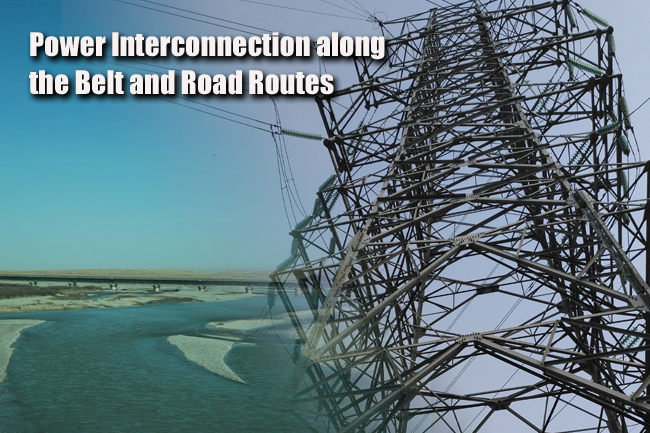Actively and Steadily Promote Power Interconnection along the Belt and Road Routes
Nov 16,2017

By Research Group on Power Facility Interconnection along the Belt and Road Routes, DRC
2017-8-17
Power interconnection, with the UHV (ultra-high-voltage) power grid as the backbone network, consists of transcontinental and transnational backbone networks and power grids of different voltage levels in different countries. Through the construction of an interconnected strong smart grid for the coordination of renewable energy development, transportation and utilization between the countries along the Belt and Road routes, a clean, efficient and safe energy network is to be established, and further to deepen the energy cooperation between countries along the Belt and Road routes in order to promote the new energy management mechanism. Power interconnection is an important component of the Belt and Road facility connection, and also represents an important practice in the establishment of the global energy network. It is of strategic significance to promote power interconnection in the framework of the Belt and Road Imitative, for it could accelerate the energy transformation of the countries along the Belt and Road routes to jointly cope with environmental pollution and climate change, help the less developed countries to enhance their level of industrialization and modernization, optimize global energy governance, and enable China to gain a bigger say and more influence in relevant fields.
Many practical obstacles still remain in the course of promoting power interconnection. First, the present level of power grid connectivity is low in various countries; second, cross-regional power interconnection is limited by key technology constraints; third, it is curbed by inadequate supporting policies of different countries; fourth, a large amount of investment is required relating to power interconnection.
We need to make overall planning and promote power interconnection actively and steadily. We need to focus on future development, make overall planning, create favorable occasions according to circumstances, and promote power interconnection in an active and steady manner. The development projects could be launched from close-by countries to countries far off step by step and in different phases, through consultations and coordination in a proper, moderate and orderly manner. It is suggested that the projects be launched in three stages. 1. The short-term target. By 2020, China will ensure that those countries along the routes with more developed power grids could basically realize the interconnection of domestic power grids, help less-developed countries to start and strengthen their domestic grid network, and continue to advance the demonstration projects of transnational interconnection. During that period, China will complete the construction of a strong smart grid that links up the major energy bases and the main load centers. 2. The mid-term target. From 2020 to 2030, China will step up the construction of a close-knitted and coordinated regional power network infrastructure among neighboring countries. At the same time, China will promote power interconnection between other countries involved, so as to lay the foundation for the final formation of a global energy network. China will launch the construction of large-scale energy bases along the Belt and Road routes, in order to promote the basic realization of interconnection power grids in regions including Europe, East Asia and the Gulf countries. In addition, China will start the grid interconnection projects in less developed areas, and in qualified areas, transcontinental demonstration projects can be carried out. 3. The long-term target. By 2050, China will fully develop the large-scale clean energy bases, realize the transcontinental and transnational power network in a wider area, comprehensively realize the power interconnection along the Belt and Road routes, and ultimately built up the global energy network.
Some policy options are raised as follows. In general, it is suggested that we should continue to enhance the consensus on relevant projects among countries along the routes, and step by step promote the interconnection of power in a positive, stable, mutually beneficial and market-oriented approach. First, we need to carry out in-depth researches on energy policies of the countries along the Belt and Road routes; second, we need to promote the establishment of the power and energy coordination mechanism between governments and enterprises of countries along the Belt and Road routes; third, we need to vigorously advance the innovation in key technology of power interconnection; fourth, we need to explore the operation and transaction mechanism and commercial investment model.














